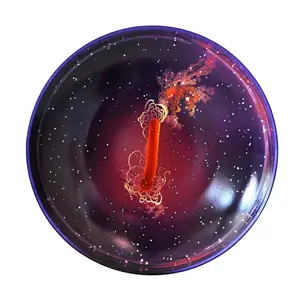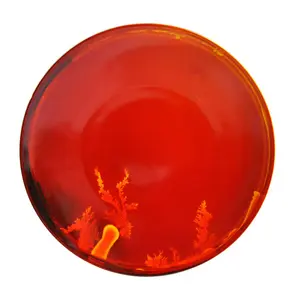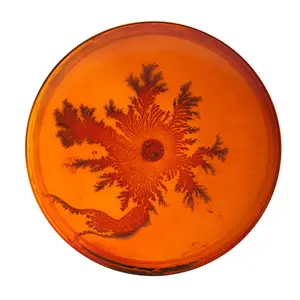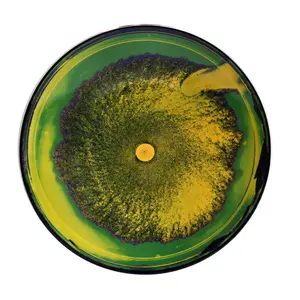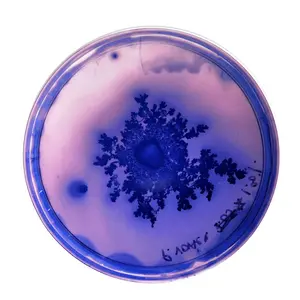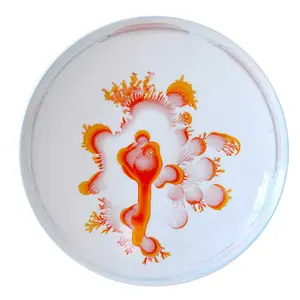Would You Eat from Plates Printed with Bacteria?
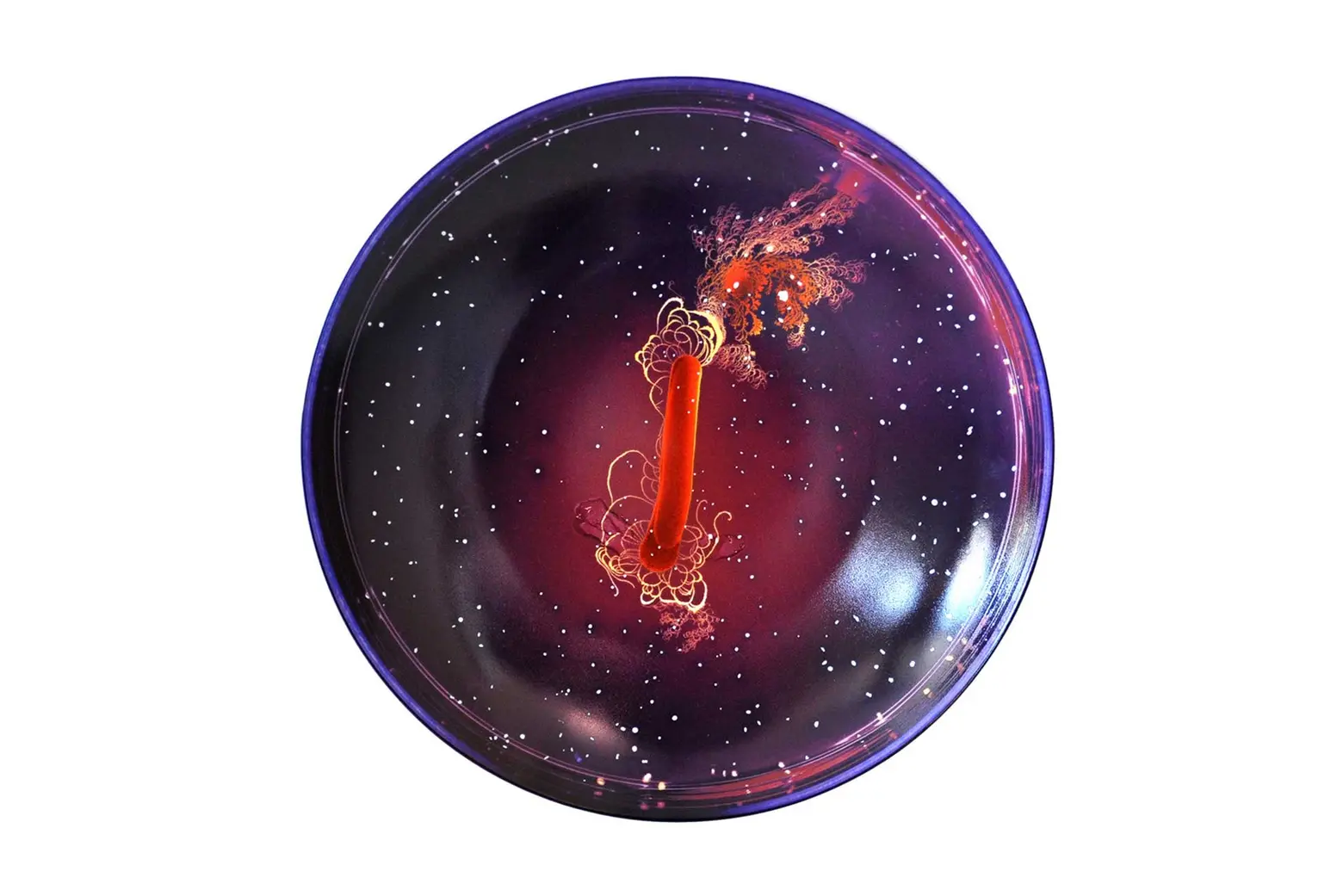
Brazilian artist Vik Muniz and U.S. bioengineer Tal Danino recently joined forces to make the invisible stunningly visible. They created a hauntingly beautiful set of tableware with colorful abstract patterns for French porcelain maker Bernardaud. Fittingly named Petri Dishes, like the shallow glass dishes biologists use to culture cells, the unique plates feature exploded photographs of bacteria like paenibacillus and salmonella.

Only good things can arise from such an offbeat collaboration: Vik Muniz is an artist born into a working-class family in Sao Paulo, Brazil. When he was young, he was shot in the leg and received compensation for his injuries, which he used to fund a trip to New York City. He’s been living and working in Manhattan since the 1980s, first as a sculptor and then as an experimental photographer using dirt, diamonds, sugar, string, chocolate and garbage to create work that has garnered him global recognition (and a documentary). His partner for Petri Dishes is Los Angeles-born Tal Danino, a widely published academic with degrees in physics, chemistry and math, who received a Ph.D. in bioengineering. His thesis was based on the dynamics of synthetic gene oscillators in bacteria and their applications, and he’s currently a postdoctoral fellow at MIT.

From the mix of these two very different characters arises very enchanting objects. Just like a microscope, the plates unveil the magic of science, revealing the beautiful colors and designs of one-celled organisms that are imperceptible to the naked eye.
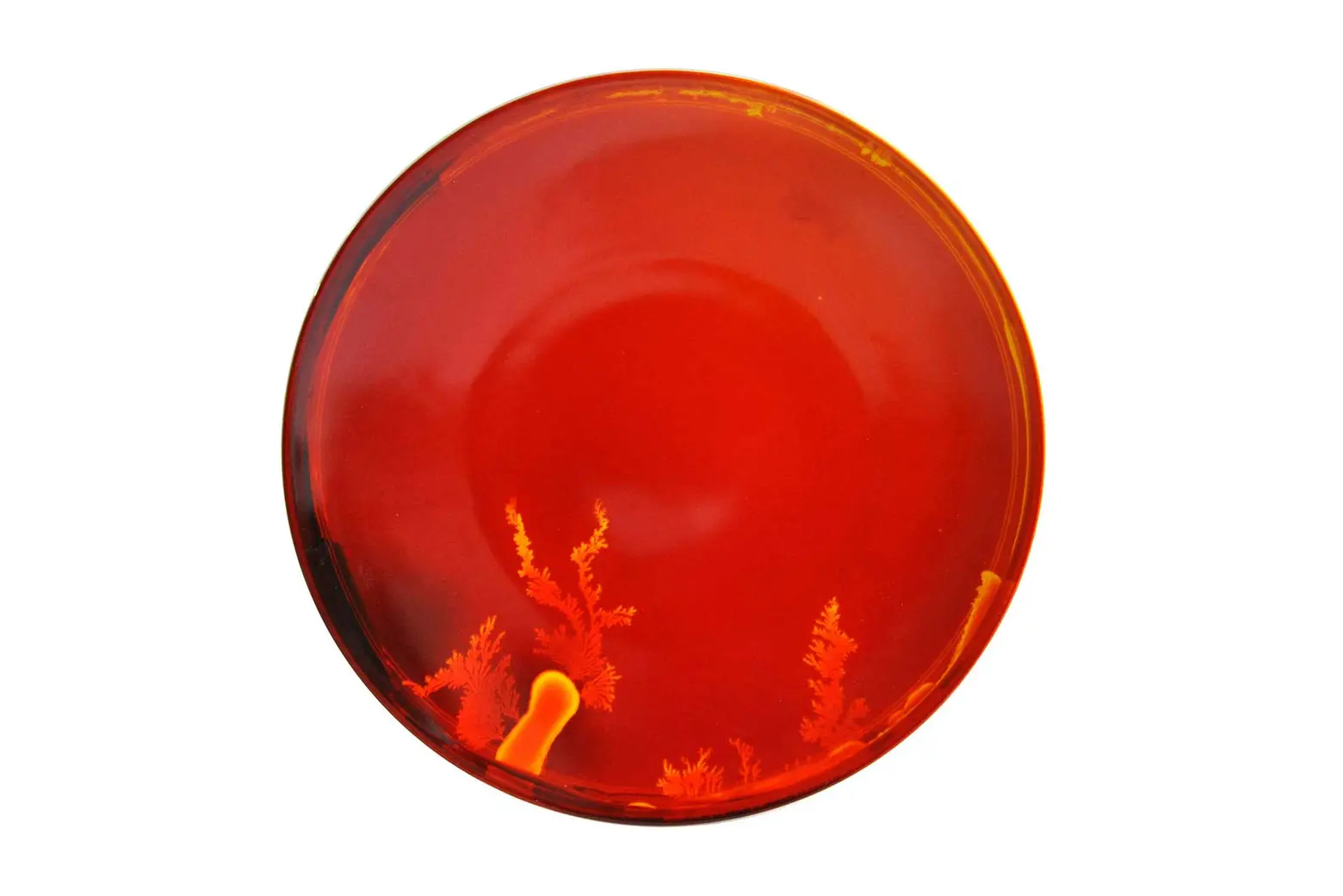
To make the designs, the duo took strains of paenibacillus and salmonella and let them grow inside petri dishes until sublime abstractions took shape. While some of the images look more like galaxies or celestial super clusters, some resemble moss, algae and even corals.

Muniz explains how the patterns are born: “Bacteria interact with each other at the microscopic level, communicating where and when they should search for food,” he continues, “the patterns emerge from an initial population of bacteria that swim outward through an Agar gel using their motorized tails, creating the equivalent of a microscopic traffic jam of bacteria.”
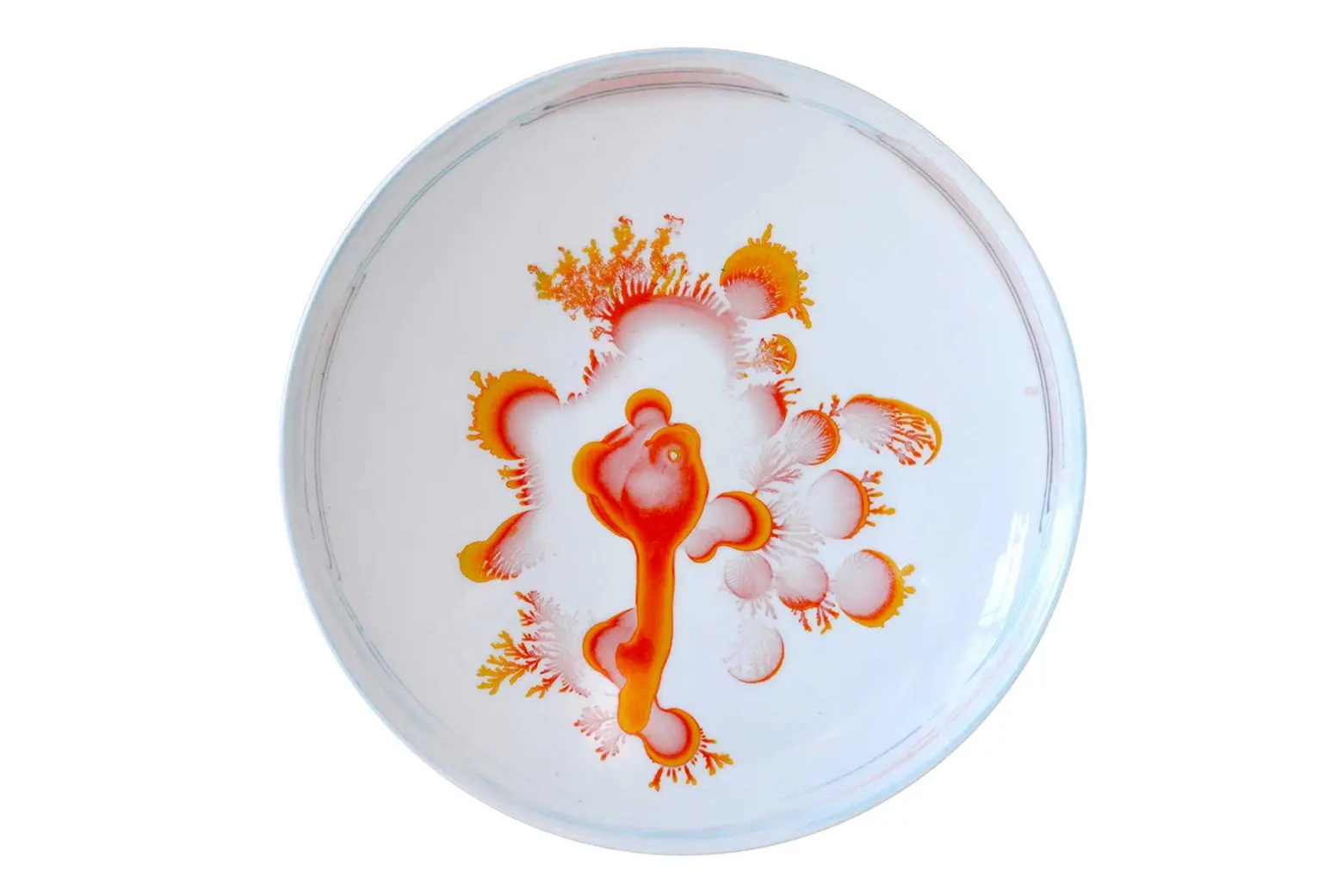
Would using these bacteria patterns inspire you or make you lose your appetite?
If you love them, a six-plate set will soon be available from the MoMA Design Store.
Check out artist Vik Muniz’s previous work here, and bioengineer Tal Danino’s findings here.
RELATED:
- Moooi Makes Stunning Photorealistic Carpets Using iPhone Photos
- Laser-Engraved Rolling Pins Leave Fun Prints on Your Baked Goods
- Livin Studio Designs Innovative Fungi Cutlery for Eating Their Futuristic Sustainable Food
